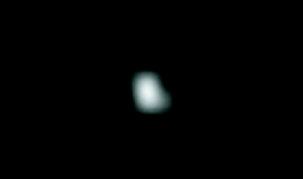Discovered by LINEAR MPC designation 132524 APL Minor planet category main-belt Discovered 9 May 2002 Asteroid group Asteroid belt | Discovery date 9 May 2002 Alternative names 2002 JF56 Observation arc 9225 days (25.26 yr) Spectral type S-type asteroid | |
 | ||
Named after Applied Physics Laboratory Discovery site Magdalena Ridge Observatory Discoverer Lincoln Near-Earth Asteroid Research Similar Solar System, 2685 Masursky, 5535 Annefrank, Asteroid belt, 9969 Braille | ||
132524 APL—previously known by its provisional designation, 2002 JF56—is an asteroid in the asteroid belt approximately 2.3 kilometers across.
132524 APL was discovered on 9 May 2002 by the Lincoln Near-Earth Asteroid Research (LINEAR) Team at Socorro, NM. The New Horizons probe flew by it at a distance of approximately 102,000 kilometers on 13 June 2006. The spectra obtained by New Horizons show that APL is a stony S-type asteroid.
The asteroid orbits the Sun in a somewhat eccentric orbit at a distance of 1.9–3.3 AU once every 4.2 years. Its orbit is tilted off the ecliptic by 4 degrees.
Discovery
New Horizons was not intended to fly by APL, and the flyby was just a coincidence. Alan Stern, principal investigator for New Horizons, named the asteroid in reference to the Johns Hopkins University Applied Physics Laboratory (APL), which runs the mission.
